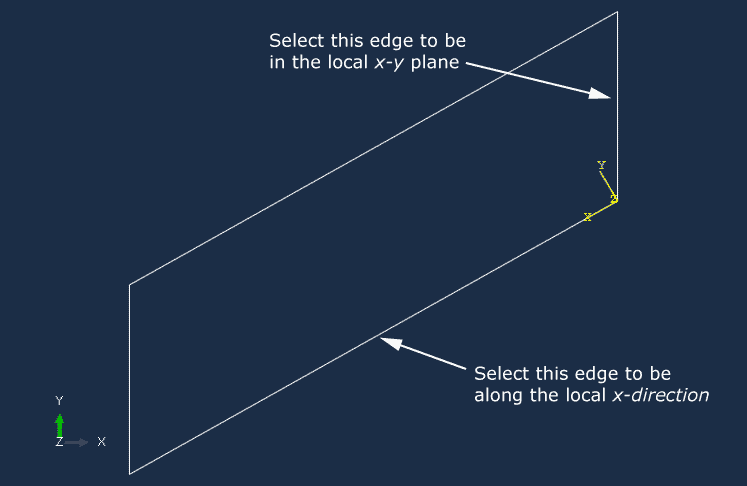Defining the material and section properties and the local material directions | ||
| ||
Context:
Create the material definition; name the material
Metal.
The orientation of the structure in the global coordinate system is shown in Figure 1. The global Cartesian coordinate system defines the default material directions, but the plate is skewed relative to this system. It will not be easy to interpret the results of the simulation if you use the default material directions because the direct stress in the material 1-direction, , will contain contributions from both the axial stress, produced by the bending of the plate, and the stress transverse to the axis of the plate. It will be easier to interpret the results if the material directions are aligned with the axis of the plate and the transverse direction. Therefore, a local rectangular coordinate system is needed in which the local -direction lies along the axis of the plate (i.e., at 30° to the global 1-axis) and the local -direction is also in the plane of the plate. Following the instructions given below, define the shell section properties in a local (nondefault) material coordinate system.
 .
.
